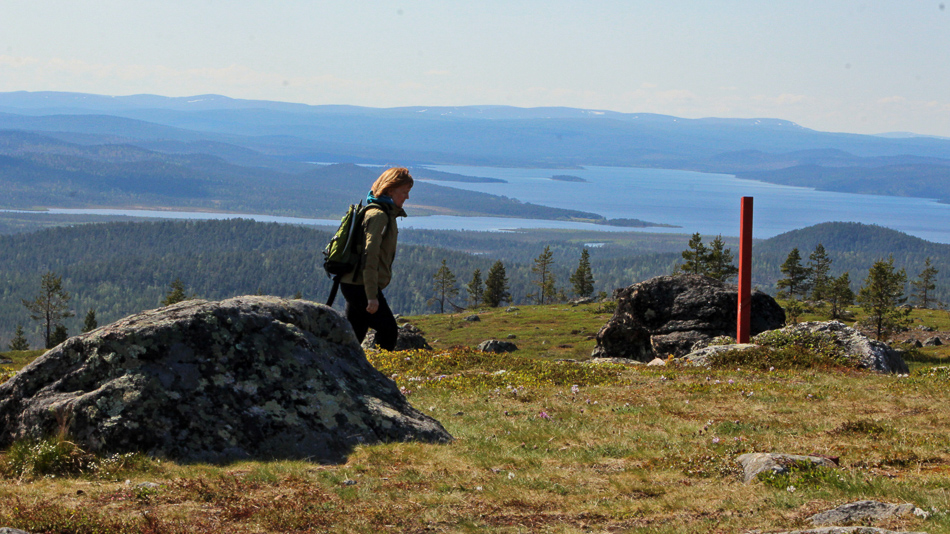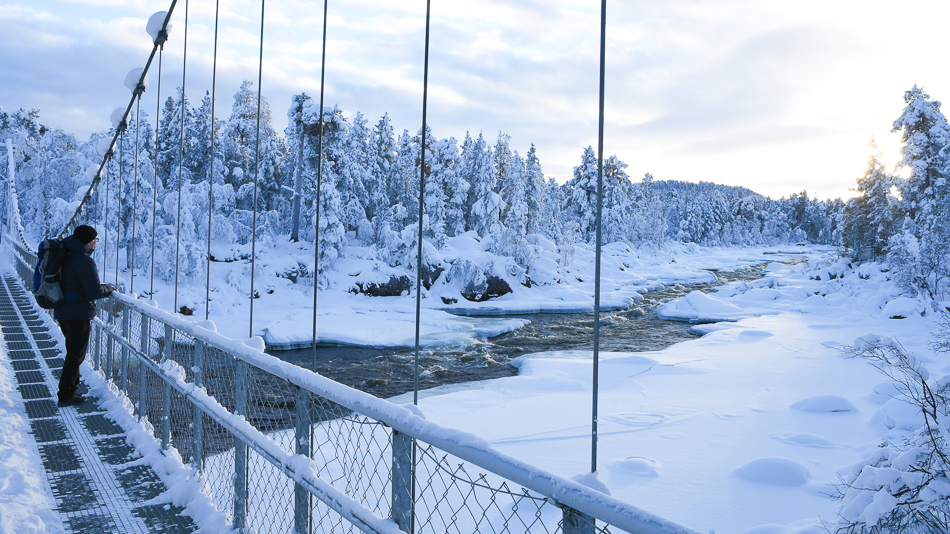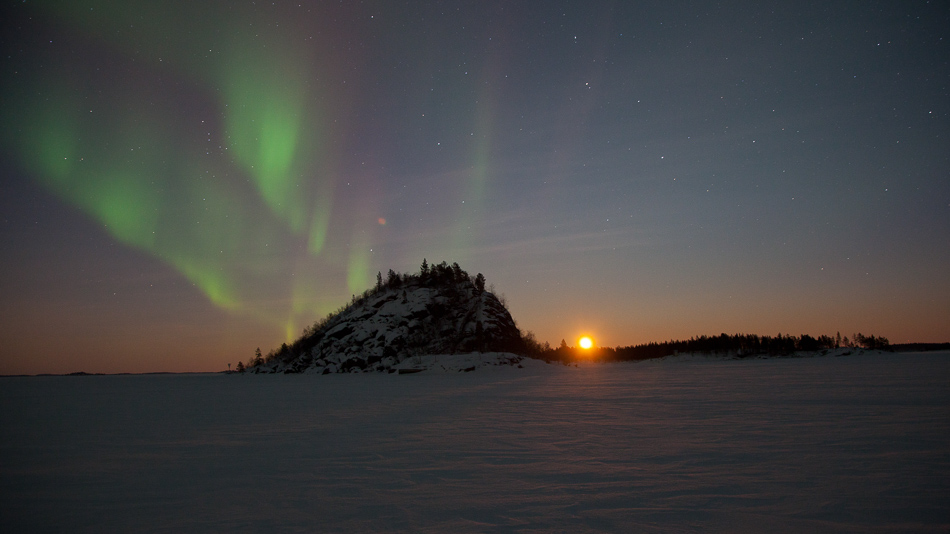Situated in Northern Lapland by the shores of Lake Inarijärvi, the village of Inari is at the heart of Sámi culture in Finland. A picturesque village, Inari has long attracted visitors to experience its small-town peace and the breathtaking beauty of the surrounding nature, and to browse the authentic handicrafts in the local artisan shops.

Inari’s central importance to Sámi culture is cemented in two major centres located there. The first is Siida, home to the Sámi Museum, Northern Lapland Nature Centre and the Sarrit restaurant. Sámi Museum Siida is the national museum of the Finnish Sámi population, whose main purpose is to support the identity and the cultural self-esteem of the Sámi.
The second is Sámi Cultural Centre Sajos, the largest conference and event venue in Northern Lapland, which houses the Sámi Parliament of Finland, the Sámi Education Centre Institute, the Sámi Archives, and a number of other associations.


Siida — Sámi Museum and Nature Centre
A diverse centre with both cultural and nature exhibitions to explore, Siida also hosts cultural events and seminars, as well as a museum, nature centre’s customer service, Siida Shop and a restaurant Sarrit serving daily lunches. During the summer visitors can also visit the open-air museum, which showcases the cultural heritage, architectural heritage and livelihoods of the Finnish Sámi. The purpose of the permanent exhibition is to highlight the links between Sámi culture and arctic nature, offering visitors a vivid visual experience and a wealth of information.
Siida’s permanent exhibition is in two sections: an introductory exhibition which outlines the region’s history and helps explain its present, and the main exhibition which features interwoven sections on Northern Lapland’s nature and Sámi culture. Its themes deal with the strategies needed to survive in extreme conditions, as well as the evolution of Sámi ethnicity and modern identity. The objective is not to give visitors a detailed lesson, but to allow them to sense and feel what it is like to be Sámi and the spirit of the Sámi Homeland.
Nature Centre Siida’s Customer Service helps with questions related to hiking and travel in Inari and Utsjoki. They will also guide you to find the best travel destinations for your individual needs.




Sámi museum and Nature Center Siida will be renewed
The Siida building that opened in 1998 will be renovated and expanded, with the new parts housing the Sámi Museum Collections Unit and the restaurant. The rebuilding process begins in spring 2020 and during renovation 04/2021-03/2022 open air museum and restaurant are open. Renewed Siida with new permanent exhibitions will be opened 1.4.2022.
Siida Open-Air Museum — Exploring Inari’s 10,000 year history
Siida’s Open-Air Museum, which is open during the summer months, tells of the story of Inari’s 10,000-year history. From archaeological evidence it is known that people have lived on the shore of Lake Inarijärvi, at its meeting point with the River Juuanjoki, since nearly 10,000 years ago in the Mesolithic Period of the Stone Age.
The Open-Air Museum features an approximately 800 metre-long trail in the shape of a reindeer herder’s lasso. Along the trail visitors can view around 50 buildings and structures, grouped by their cultural area and their intended use. The displays tell about the cultural heritage, architectural heritage and livelihoods of Finland’s three Sámi cultures.


Skolt Sámi Heritage House
The Sámi Museum also operates the Skolt Sámi Heritage House in Sevettijärvi village. It is open in the summertime and is free for visitors. The Heritage House and the Open-Air Museum on its grounds contain information on Skolt Sámi history and display the living and construction options from two different eras.
The Skolt Sámi originally lived in settlements located in Russia, in areas ceded to the USSR in World War II. As the war ended the Skolt evacuated Suonikylä and were settled in the Sevettijärvi – Näätämö area in 1949.


The breathtaking nature of Inari
This region of Northern Lapland is one of the most beautiful in all of Finland, one dominated by the protected nature of its national parks and wilderness areas. To the southwest lies Lemmenjoki National Park, occupying some 2,860 square kilometres, where for over 70km the Lemmenjoki River winds its way through the Maarestatunturi and Viipustunturi Fells whose slopes are covered in unique old-growth Pine forests.

Riverboat trips are a popular attraction in Lemmenjoki, and are an excellent way to experience Ravadas. Day trips to the Ravadas Falls are operated by many local companies. Day trips by riverboats may include exciting adventures like lunch around an open fire, traditional Sámi yoik singing and visits to reindeer farms.
Lemmenjoki area has a long history of gold panning, which visitors can learn about and even try their hand at thanks to activities organised by local companies.
Lemmenjoki National Park has 60 km of marked trails for hiking and biking, most of which start at the village of Njurkulahti. These trails vary in length, from the basic Lemmenjoki Nature Trail of 4.1 km, through the Joenkielinen Circle Trail which is 16 km, to the Ravadasjärvi Circle Trail which is over 26 km.


Close by Inari village lies the Inari Hiking Area, which includes excellent marked trails and hiking destinations and is perfect for a day’s hiking. The new suspension bridge crossing the Juutuanjoki River is located three kilometres from the Inari village, over the Jäniskoski rapids.
The Inari Hiking Area also includes the Myössäjärvi area, Otsamotunturi area, and the area between the beautiful Tuulispää fell and the Inari village. The 5 km long Pielpajärvi Wilderness Church Trail passes through the handsome old forest, passing by stunning forest lakes along the way. The culturally and historically significant Pielpajärvi Wilderness Church was built in Inari’s old winter village in 1760, and is one of the oldest buildings in northern Lapland.
Another popular destination is Ukonsaari, a sacred Sámi site. This rocky island with steep cliffs, rises out of the middle of lake Inarinjärvi. Boat trips around this sacred site are the best way to experience Ukonsaari. Visit Inari, which arranges daily Lake Inari cruises has agreed to not land tourists there anymore. The island is currently being evaluated by UNESCO and is on their ‘tentative’ list of world heritage sites.


How to get there
Although Inari is in the far North, it just about 1 h 40 min from Helsinki by plane. The nearest airport is in Ivalo, with regular daily connections to the capital. Visitors can also take a memorable bus ride through arctic landscapes from Rovaniemi. There is a train station and an airport in Rovaniemi and from Rovaniemi it is possible to take a bus ride to Inari.


